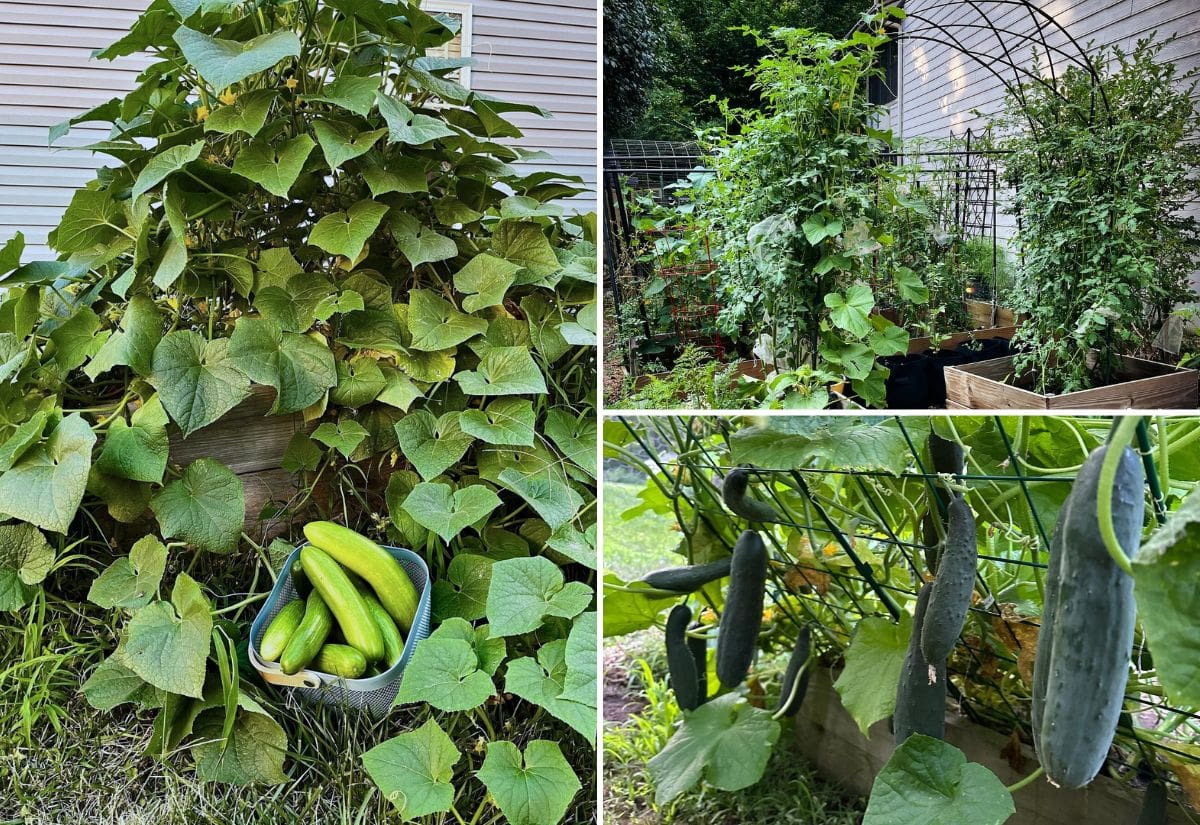
Ah, cucumbers—a staple in many gardens, but their sprawling vines can sprawl out and occupy precious square footage in your garden. That’s where vertical growing comes into play. Trellising cucumbers not only maximizes your garden space but offers a cornucopia of other advantages that lead to a more fruitful harvest and healthier cucumber plants.
Growing cucumbers vertically on a trellis not only helps you keep your garden organized, but it also ensures that your cucumbers are cleaner, more uniformly shaped, and easier to pick. After all, when cucumbers are elevated, they don’t touch the soil, reducing the chances of disease and pest infestations. Trellising can even enhance pollination, giving you more bang for your gardening buck.
If you’re new to the trellising game, fear not; it’s fairly straightforward once you get the hang of the basics.
So join us as we explore the many benefits of growing cucumbers vertically, along with some of the most practical and innovative DIY cucumber trellis ideas that can offer your cucumbers the support they deserve this season.
6 Reasons To Grow Cucumbers on Trellises
Growing cucumbers vertically can reduce the hardships associated with growing these refreshing summer fruits, and it is becoming more common to trellis climbing cucumber vines instead of letting them lie on the ground. Here’s why:
You Will Have More Space To Plant Other Crops
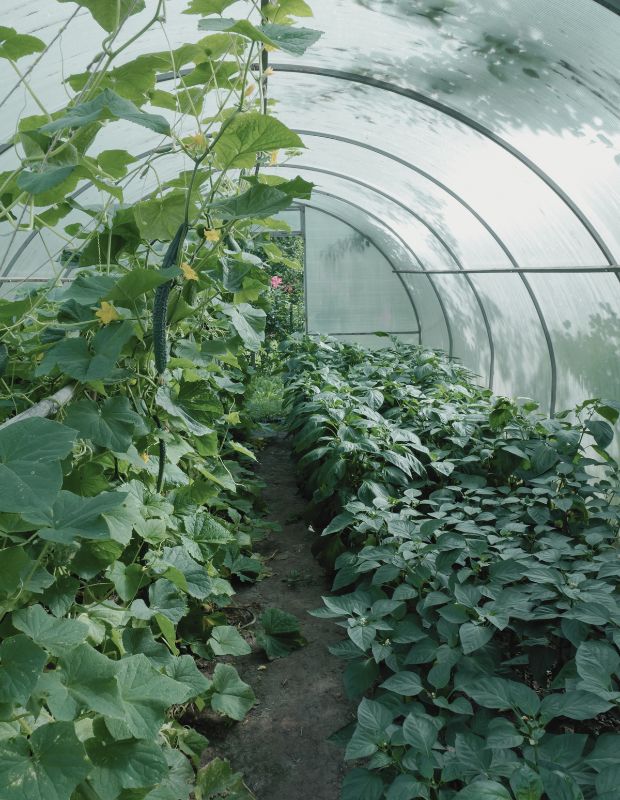
The most obvious and popular reason to grow cucumbers upwards is that it opens up way more space on the ground level to grow other plants. Cucumber vines can become very long and tangled, and when they are left to grow out horizontally they will cover and waste huge patches of valuable soil space. Vertical plants take up very little room at the ground level and can have other cucumber plants or crops grown just a couple feet away!
Plants Are Easier To Water
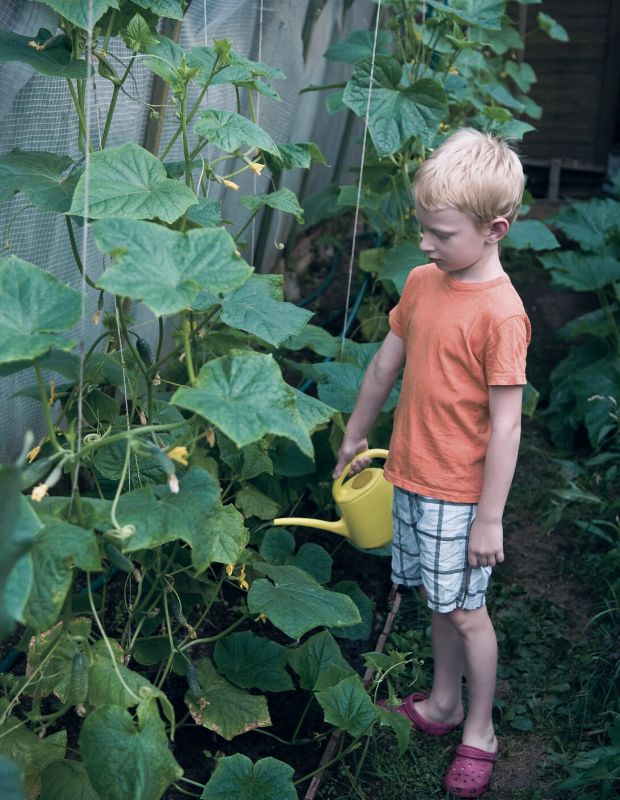
Cucumber plants are susceptible to a number of fungal diseases and should only be watered at the base of the plant to avoid leaves getting wet. Vertically grown cucumbers can be easily and quickly watered at the ground level compared to sprawling plants that lie flat on the ground, whose main stems can often be difficult to locate.
Better Air Circulation Means Reduced Likelihood Of Diseases
Trellised plants have fantastic air flow between the foliage, and any water from rainfall that does get on the leaves of your cucumber plants will quickly dry. Air circulation generally contributes to healthier plants because it reduces the likelihood of humid, damp spaces developing in the foliage which can result in fungal growth.
The Cucumbers Are Easier To Harvest
Trellised plants mean you don’t have to break your back bending over to harvest fruits off the ground! You have easy access to the hanging cucumbers, and they are much easier to spot when walking in a circle around the trellised plant as compared to those that would lie buried under foliage on the soil.
Fruit Is Cleaner And Doesn’t Need To Be Washed
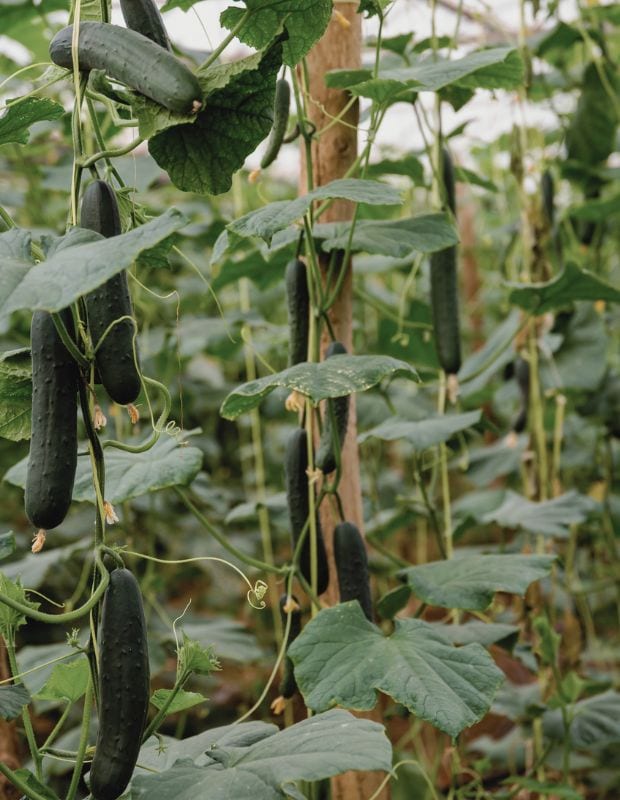
Unless you use chemicals on your cucumber plants (not recommended), you won’t need to wash the fruits that you harvest when they are trellised. They hang in open air and have no contact with the soil or anything else, meaning you have ready-to-eat clean cucumbers on the day of harvest. The only thing you need to watch out for is bird droppings.
Fruit Is More Aesthetic And Uniform
Cucumbers that are grown vertically will grow straight and will the fruit develop an even color with no yellow patches. Yellow patches develop on the underside of cucumbers that grow flat on the ground, which receive no sunlight and little air flow, and they are also usually bent or misshapen.
Most home-gardeners don’t care too much about fruit aesthetics, but it can be a little extra bonus to harvest picture-perfect cucumbers from your plants.
6 DIY Cucumber Trellis Ideas For a Better Harvest
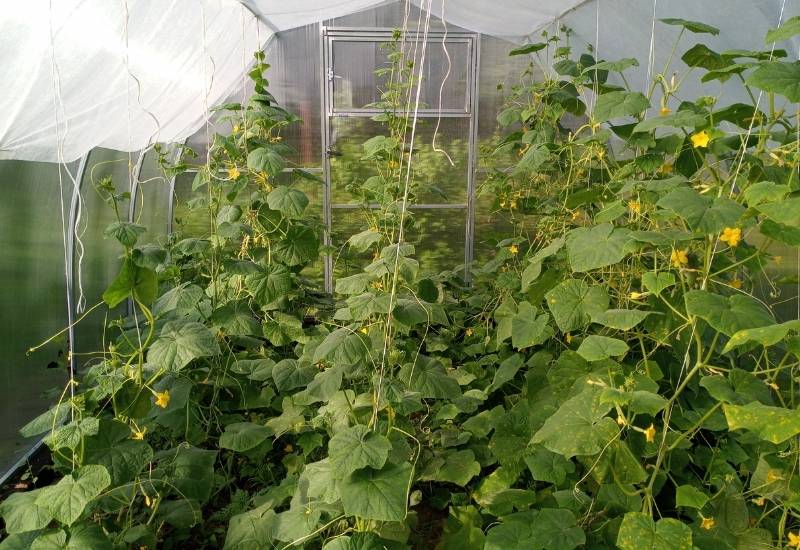
Since many vegetables like tomatoes, squash, beans, or peas benefit from trellises just like cucumbers, there is a huge diversity in types of trellis to choose from.
They each have their own unique benefits that are suited to particular gardens and vegetables, and they also vary in price, ease of use, and height.
Different types of vine cucumbers grow to different heights, so you should check how tall your specific variety gets at maturity.
Vine cucumbers typically grow around 4 -5 feet tall but can reach 6 feet.
Here are 6 types of trellis you can use on your cucumber plants.
1: A-Frame Trellis
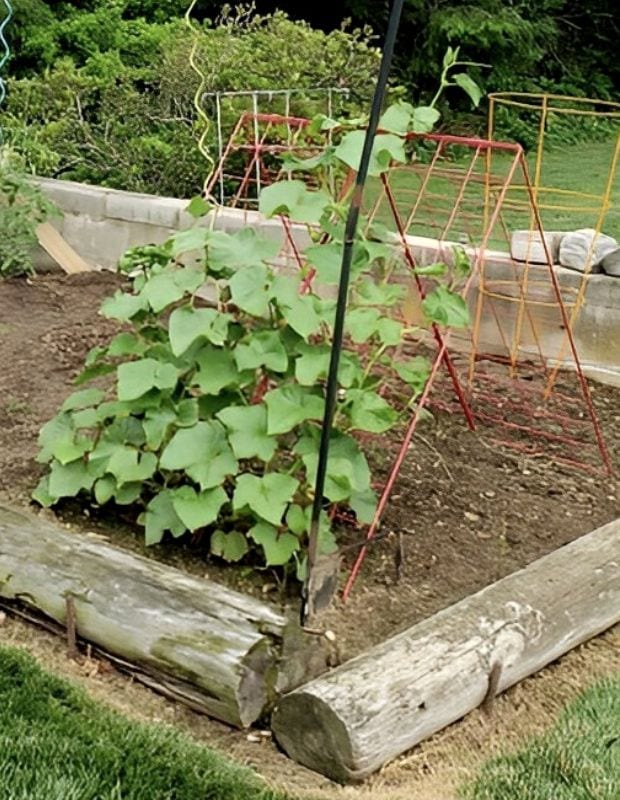
A-Frames are probably the most popular type of trellis for cucumbers, as they provide sturdy structures that are usually around 5 feet tall.
They can be made out of wooden or metal legs that poke into the soil at an angle and meet at the maximum height point creating an A shape that looks like a tipi.
Buying them new can be expensive but they are quite simple to make yourself out of repurposed wooden beams or bamboo.
The main drawback is the amount of space they take up around the cucumber plant, but many people choose to grow greens like spinach or arugula around the bottom of the frame to work around this problem.
2: Metal Arches
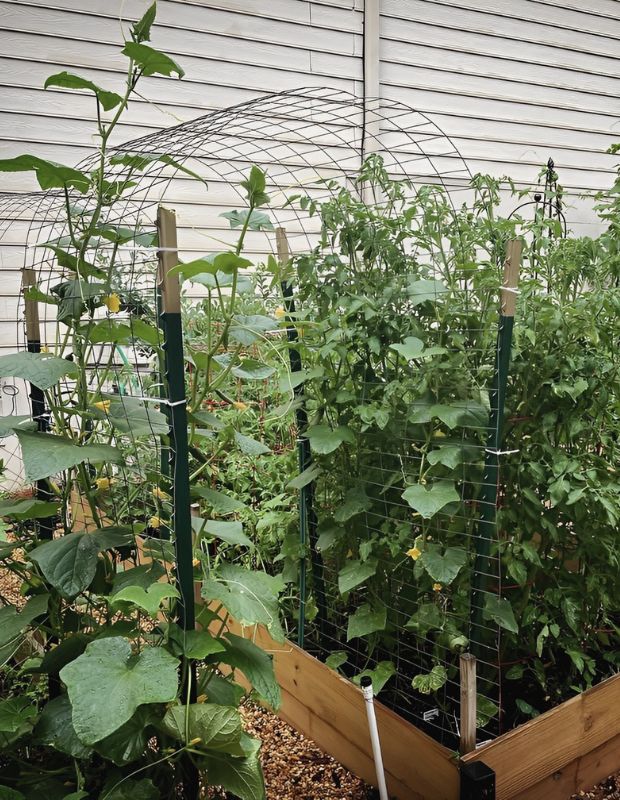
Cucumber arches are a great option for those gardeners looking to add an aesthetic feature to their garden, as they create a leafy archway over your beds that give off a cottage garden vibe.
Usually made out of some sort of metal fencing that has been bent into a shallow arch, this is a good cost-saving option for gardeners who want something beautiful and effective.
The plants will need to be attached and trained to the mesh as they grow to make sure they follow the arc of the arch. Like the A-Frame, cool season greens can grow in the shade of the cucumbers on the arch.
3: String Trellis: Hanging & Horizontal
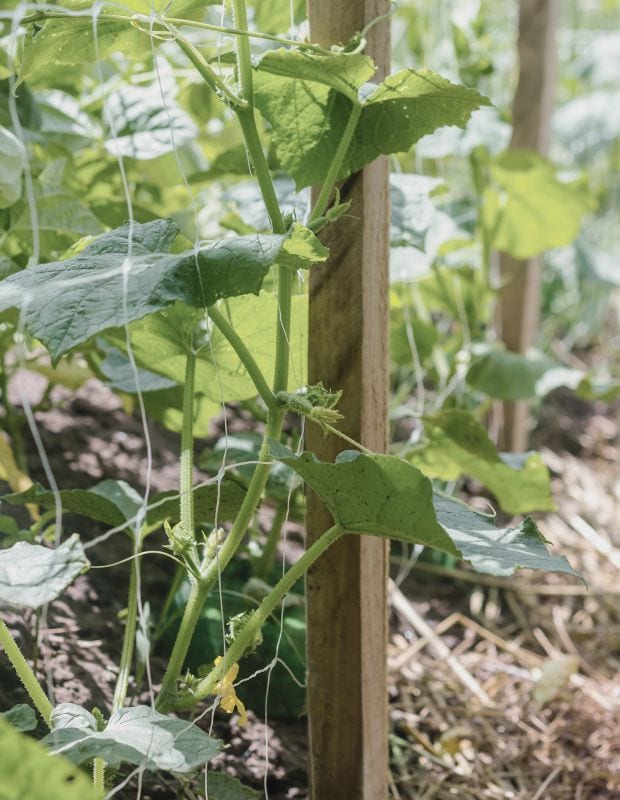
The string trellising system is a homemade trellis which can take two different forms: hanging string trellises or horizontal string trellises. Both require 6 foot tall wooden or metal posts be staked in at each end of the bed, and work best for cucumber plants grown in rows
4: Chicken Wire or Mesh Grids
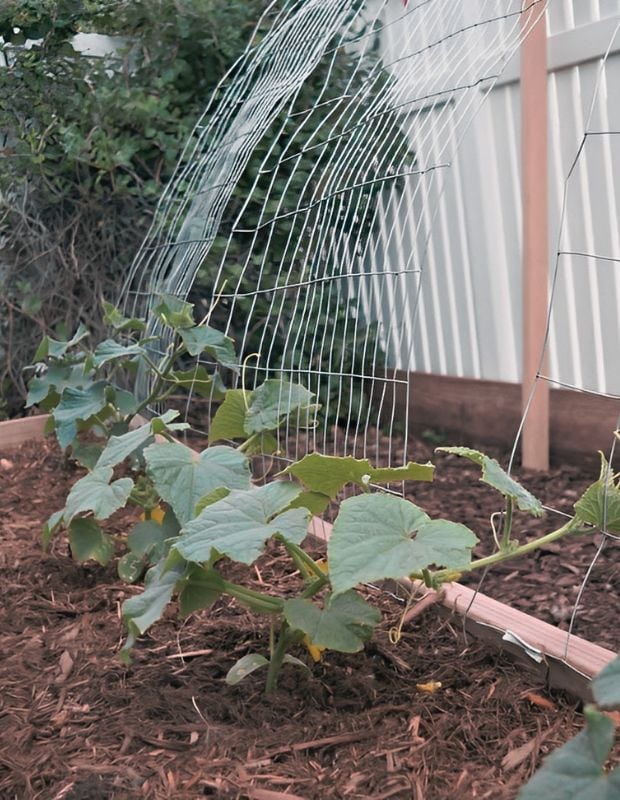
Similar to the arches, you can use chicken wire or a loose weave mesh to trellis your cucumbers vertically. The wire or mesh can be stapled against stakes so it stands like an upright sheet for the plants to grow, and is a very cost-effective and easy trellising tool- but not so aesthetic. It also acts as a wind barrier for other plants in the garden.
You may already have a mesh or wire garden fence, in which case you can plant your cucumbers alongside it, but be aware that you may have to climb over to the other side of the fence to harvest fruits that grow through the gaps.
Make sure the gaps in the mesh or grid are not too small, as this can create deformed cucumbers that get squeezed as they try to fit through tiny spaces.
5: Cucumber Cages or Tomato Cages
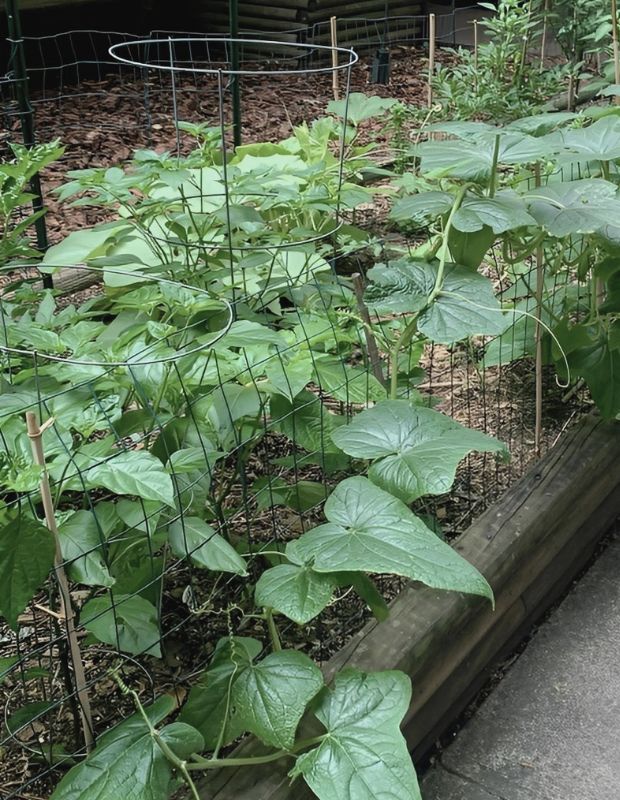
Similar to tomato cages, there are cucumber cages available for purchase that are usually square shaped and made out of metal rods.
These are very easy to use and install and are typically low maintenance once the cucumbers are planted inside, but are pricier.
You can also use metal tomato cages if you already have some to spare, but they probably won’t be tall enough for vining cucumbers and you may need to attach one on top of another to get enough height to support your plants.
You should make sure to install them by piercing them into the soil before you plant your seedlings to avoid disturbing the root system of established plants.
How to Trellis Cucumbers While They Grow
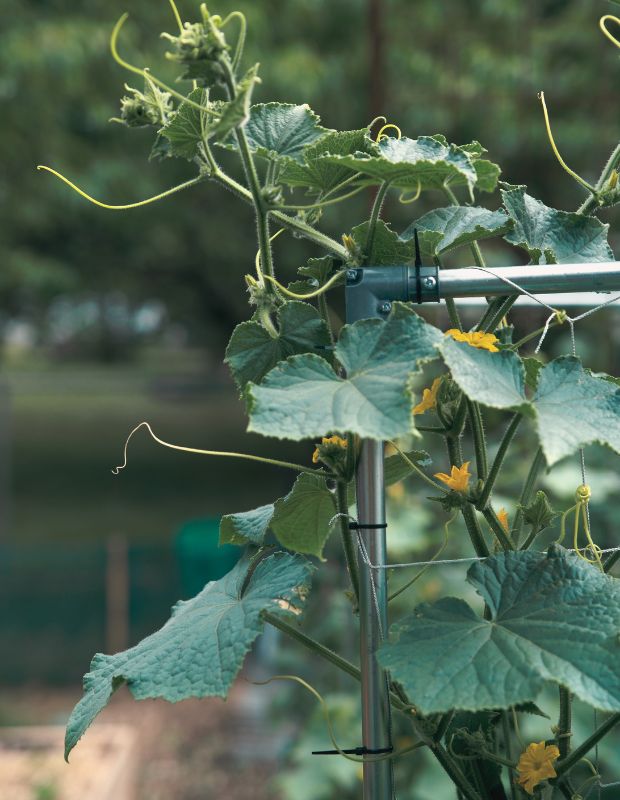
Once you have decided what kind of trellis is best suited to your garden and your budget, you will need to take some steps to make sure your cucumber grows along with it and doesn’t become damaged. Since every trellis is slightly different, this guide lists the basic steps universal to all the above trellises.
Stage 1: Install your trellis before planting your cucumbers.
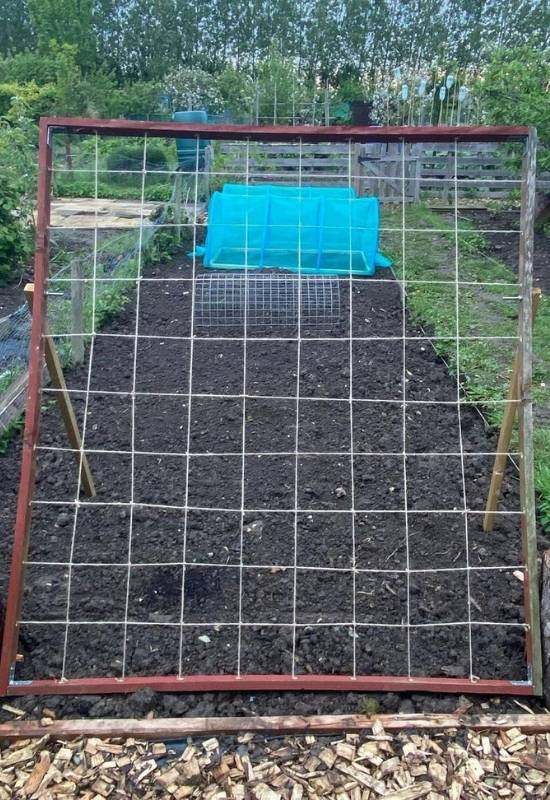
Stage 2: Seed or transplant your cucumbers at the base of the trellis.
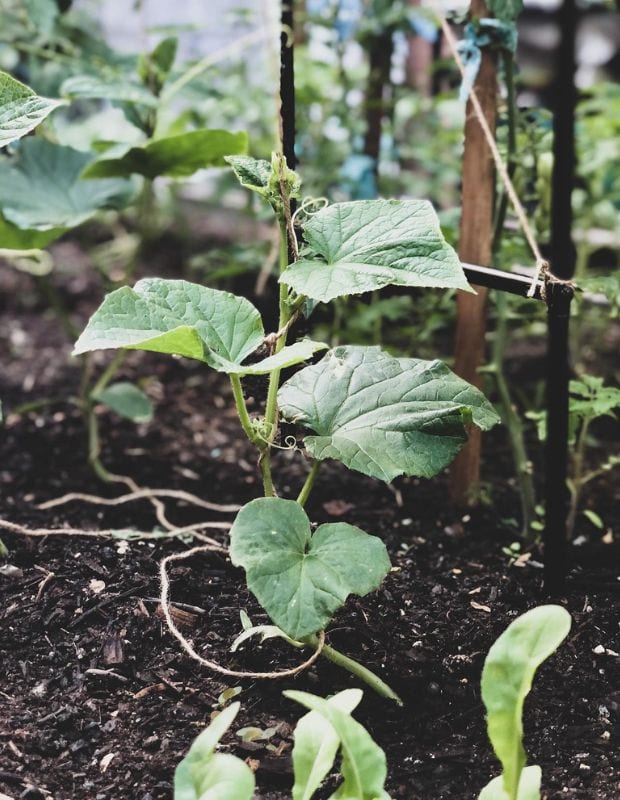
Stage 3: Train the vines around the trellis as they grow.
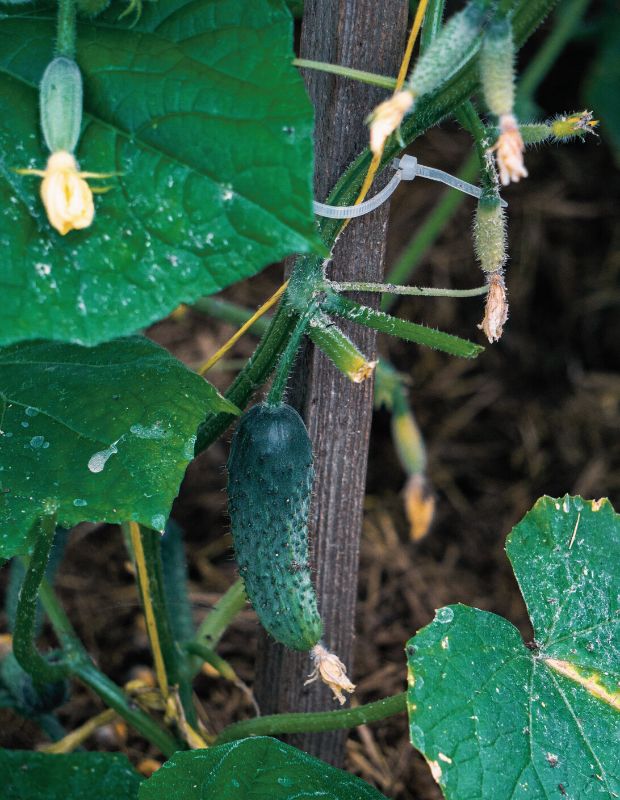
Stage 4: Care for the cucumber plant as usual.
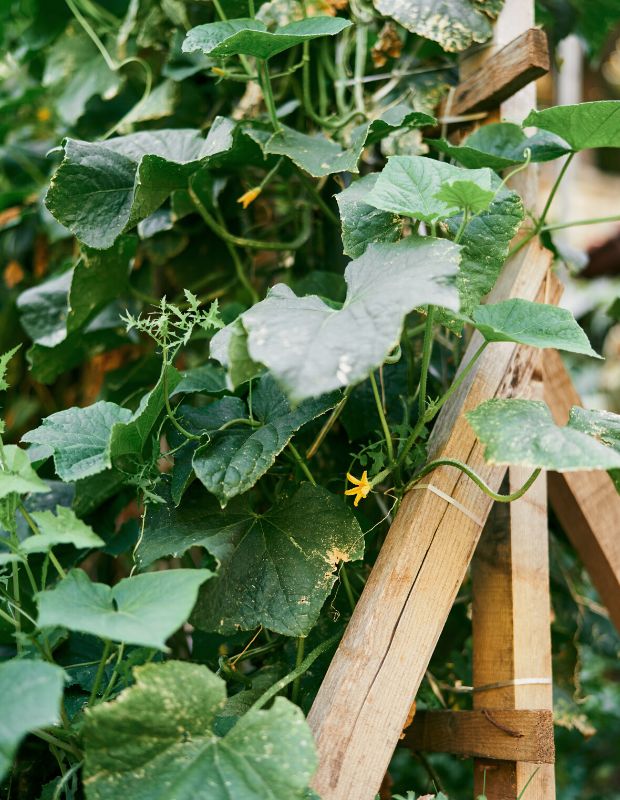
Stage 5: Care for the cucumber plant as usual.
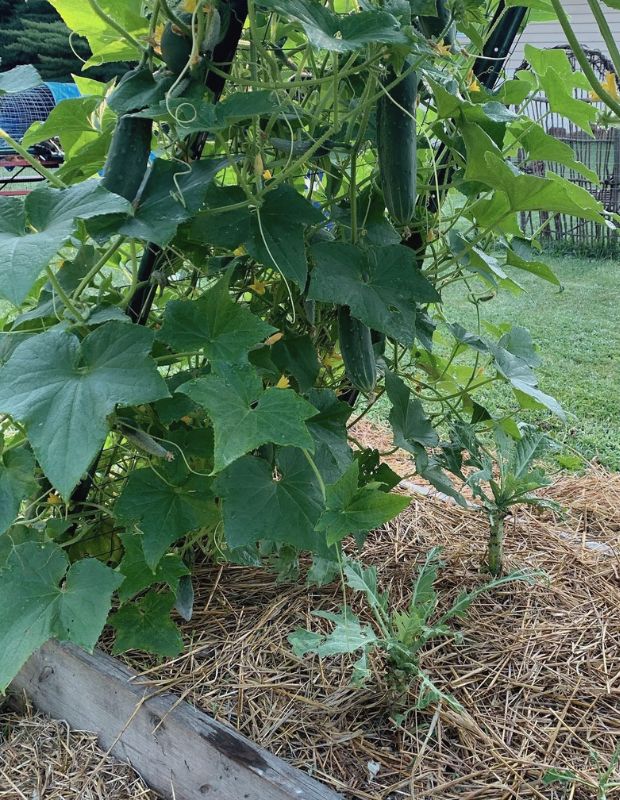
5 Best Varieties of Cucumbers to Grow Vertically
Most vine cucumbers will benefit from some kind of trellis, but there are some cultivars that are particularly well suited to a vertical garden.
1: ‘Sweet Slice’
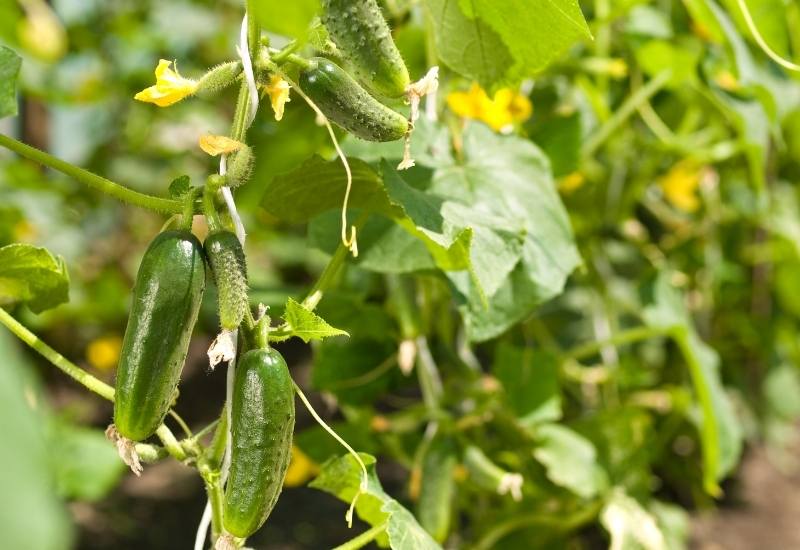
A hybrid variety of slicing cucumber that produces 10 inch long slim fruits. This cultivar is known for being resistant to many diseases, and is a heavy yielding early producer.
2: ‘Lemon’
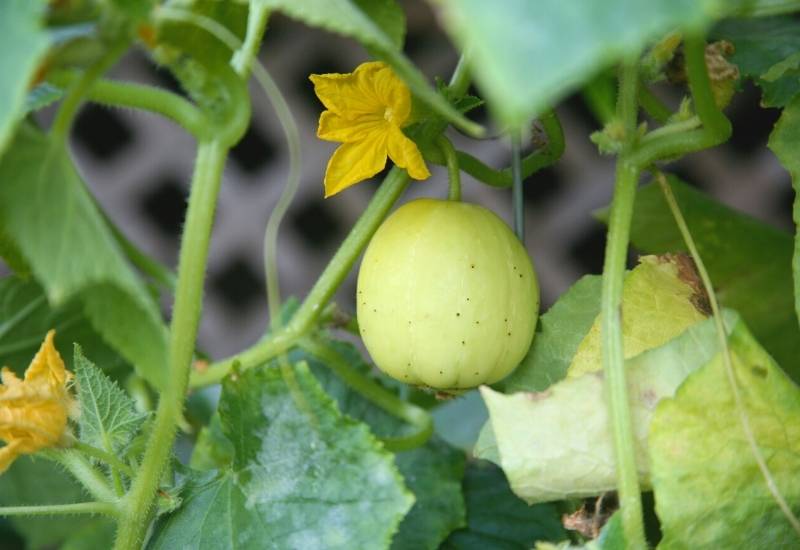
This unusual heirloom variety produces fruits that look like lemons with their round shape and yellow skin, but rest assured they taste just like cucumbers and the fruits are sweet and tender.
3: ‘Marketmore 76’
A heirloom variety that produces long and slender slicing cucumber that has set the standard for how cucumbers should look. Fruits usually grow to 9-10 inches long.
4: ‘Dasher 11’
These dark green cucumbers are on the shorter side at around 8 inches, and are another variety that is resistant to many types of fungal disease. Vigorous producers.
5: ‘Sweet Success’
Produces large cucumbers that can be a whopping 14 inches long and grow on ambitious vines that benefit from a sturdy trellis. They are seedless and have a satisfying crunch to them.
Frequently Asked Questions
Do I have to trellis cucumbers, or can I just let them grow on the ground?
You can let your cucumbers grow across the ground if you don’t feel the benefits of trellising are worth your time. You will still get lots of fruits and non-trellised vines won’t necessarily be less healthy. However, it is worth at least one season trying out a cheap trellis just to experience for yourself the benefits trellising can provide.
What is the cheapest trellis for cucumbers?
Any homemade trellis out of materials you already have will always be the cheapest, and if you have a wire fence or another type of fence suitable for trellising- use it to your advantage! Otherwise, buying a roll of chicken wire and a couple of wooden stakes to staple it to is a cost-effective trellising solution that works well.
Do I need to trellis bush cucumbers?
Bush cucumbers do not need to be trellised, as they usually max out at around 2 – 3 feet. They can still have trailing branches, but will do just fine on the edge of a raised bed where they can just hang off the side a little.

Written By
Amber Noyes
Amber Noyes was born and raised in a suburban California town, San Mateo. She holds a master’s degree in horticulture from the University of California as well as a BS in Biology from the University of San Francisco. With experience working on an organic farm, water conservation research, farmers’ markets, and plant nursery, she understands what makes plants thrive and how we can better understand the connection between microclimate and plant health. When she’s not on the land, Amber loves informing people of new ideas/things related to gardening, especially organic gardening, houseplants, and growing plants in a small space.
